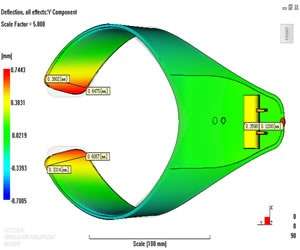Precision in Production: The Critical Role of Moldflow in Manufacturing
In terms of industrial production, accuracy and efficiency dictate the pace of innovation and production. Advances in simulation technology, particularly through Moldflow And Casting Analysis and Mold Flow Analysis, have transformed the way manufacturers approach the design and creation of molds for plastic parts and metal castings. These technologies not only improve product quality but also significantly reduce the time and cost associated with development cycles.
The
Impact of Mold Flow Analysis
Mold
Flow Analysis is a necessary instrument for engineers and designers focused on
optimizing the injection molding process. This sophisticated simulation
software predicts how plastic flows within a mold, identifying potential issues
like air traps, weld lines, and sink marks before a single piece is physically
produced. By anticipating these problems, Mold Flow Analysis
allows for adjustments in design or process parameters early in the development
stages, thereby enhancing the structural integrity and aesthetic quality of
final products.
Streamlining Design and Production
The
ability to simulate and tweak designs digitally is a game-changer in
manufacturing. It significantly shortens the product development timeline by
minimizing the need for multiple physical prototypes. This not only saves
material and labor costs but also speeds up the time to market for new
products. Additionally, Mold Flow Analysis assists in selecting the most
suitable materials and the most efficient design specifications, ensuring
optimal performance and cost-effectiveness.
Enhancing
Sustainability in Manufacturing
Using
Mold Flow Analysis also contributes to environmental sustainability. By
optimizing the mold design and minimizing the material used, manufacturers can
reduce waste and improve the energy efficiency of their production processes.
This dedication to environmentally friendly methods is growingly crucial. in a
world where consumers and regulatory bodies demand more environmentally
friendly products and processes.
Expanding
Capabilities with Moldflow And Casting Analysis
While
mold flow analysis focuses on plastic injection molding, mold flow and casting
analysis extend these capabilities to metal casting. This analysis includes
simulations of mold filling, solidification, and cooling, as well as the
prediction of defects that could occur during the casting process, such as
porosity or thermal stresses. The insights gained from Moldflow And Casting Analysis
enable foundries and manufacturers to refine their casting methods, enhance
mold designs, and ultimately produce stronger, higher-quality metal components.
Conclusion
In
conclusion, the integration of Moldflow Casting Analysis and Mold Flow Analysis
into the manufacturing technique marks a major development in the manufacturing
of both plastic and metal components. These technologies empower manufacturers
to achieve greater precision, efficiency, and sustainability. For more
information and expert guidance on incorporating these advanced simulation
tools into your manufacturing operations, visit FEAmax.com. Embracing these
modern techniques is crucial for any company aiming to lead in today’s
competitive manufacturing industry, ensuring that each product not only meets
but exceeds the rigorous standards of quality and performance.


.jpg)


Comments
Post a Comment